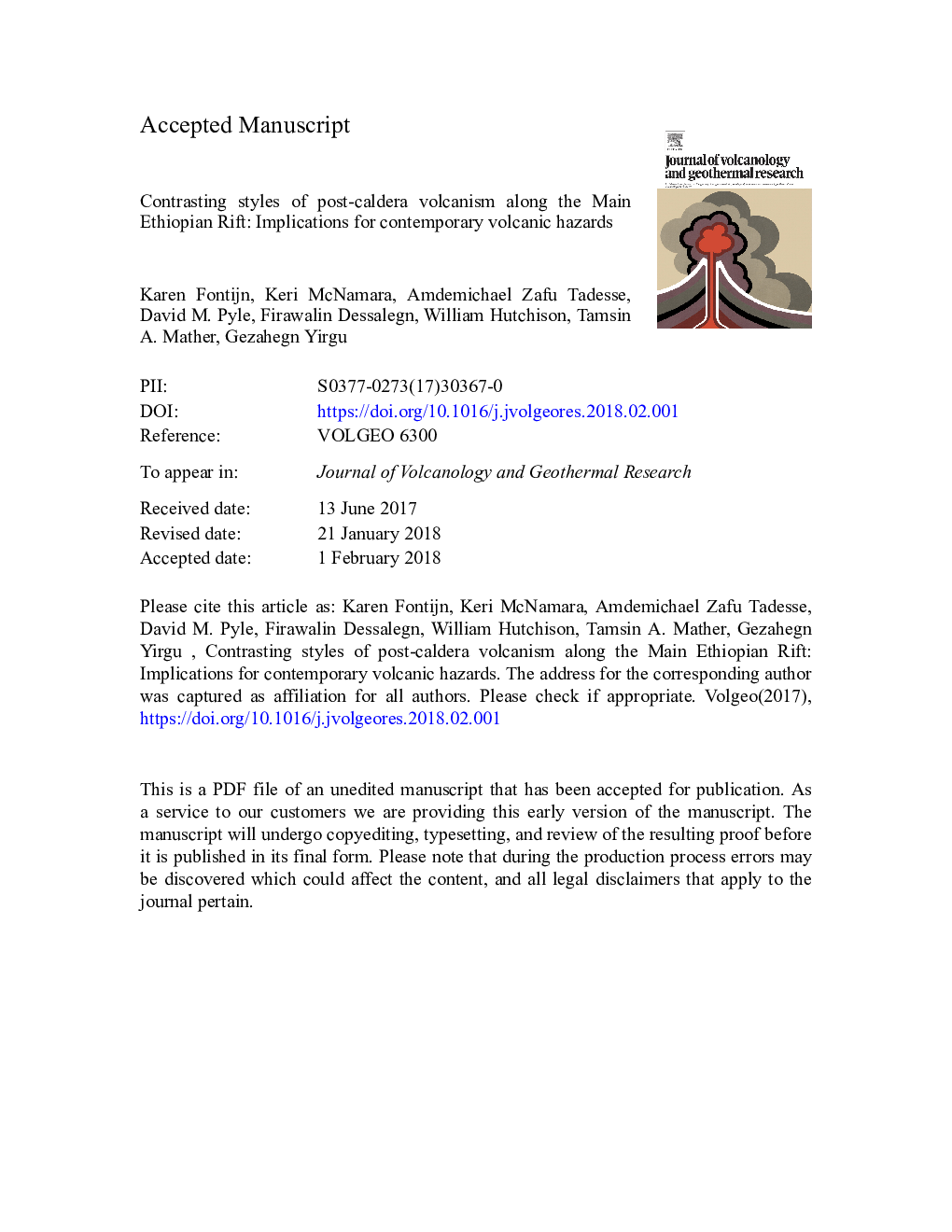| Article ID | Journal | Published Year | Pages | File Type |
|---|---|---|---|---|
| 8911311 | Journal of Volcanology and Geothermal Research | 2018 | 90 Pages |
Abstract
Most central volcanoes in the MER host large mid-Pleistocene calderas, with typical diameters of 5-15Â km, and associated ignimbrites of trachyte and peralkaline rhyolite composition. In contrast, post-caldera activity at most centres comprises eruptions of peralkaline rhyolitic magmas as obsidian flows, domes and pumice cones. The frequency and magnitude of events varies between individual volcanoes. Some volcanoes have predominantly erupted obsidian lava flows in their most recent post-caldera stage (Fentale), whereas other have had up to 3 moderate-scale (VEI 3-4) explosive eruptions per millennium (Aluto). At some volcanoes we find evidence for multiple large explosive eruptions (Corbetti, Bora-Baricha, Boset-Bericha) which have deposited several centimetres to metres of pumice and ash in currently densely populated regions. This new overview has important implications when assessing the present-day volcanic hazard in this rapidly developing region.
Related Topics
Physical Sciences and Engineering
Earth and Planetary Sciences
Geochemistry and Petrology
Authors
Karen Fontijn, Keri McNamara, Amdemichael Zafu Tadesse, David M. Pyle, Firawalin Dessalegn, William Hutchison, Tamsin A. Mather, Gezahegn Yirgu,
